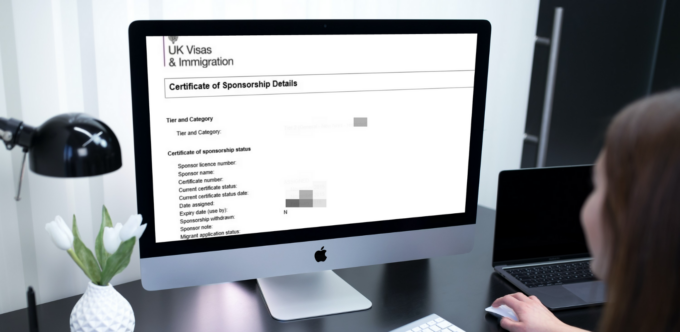Getting a sponsorship license in the UK is a complex process that requires a significant amount of preparation and compliance with UK immigration regulations.
It’s a document that an employer, company, or organization needs to hire a foreigner to fill up an open job position. Usually, the particular position is created for the employee strictly, so the company can ensure a UK citizen is not eligible for it.
By definition, a UK sponsorship license is a legal authorization granted by the UK Home Office to an organization, allowing it to sponsor foreign national workers for employment in the UK. This document allows the organizations to legally hire foreigners in the UK, but they also have an obligation to report the activities, to get most of the license. You know, the UK Home Office oversees the sponsorship license system and has the power to revoke a license if an organization is found to be non-compliant with immigration regulations.
That’s why the whole process is complex and includes many in-between activities and requirements, to prevent actions that go against the immigration regulations in the United Kingdom.
How to apply for this document?

Source:pinterest.com
Many factors can affect the duration of the process, such as the level of preparation and documentation provided, and your ability to demonstrate that you meet the UK Home Office’s requirements for sponsoring foreign nationals. The whole process is complex and challenging, but with careful preparation and attention to detail, it is possible to successfully obtain a sponsorship license.
If you need some help on how to apply for sponsor licence, stay with use because we have a few essential things to share.
The conditions for obtaining a sponsorship license in the UK are set by the UK Home Office and include:
- Being a legitimate business or organization operating in the UK
- Having a genuine need to sponsor foreign nationals for work
- Having systems in place to prevent illegal working
- Keeping accurate records and reporting on sponsored workers
- Cooperating with UK immigration authorities
Sometimes you’ll have to meet additional criteria, such as minimum salary requirements and the requirement to meet the UK’s resident labor market test.
As an organization, you must submit an application to the UK Home Office, including supporting documentation. Ensure you meet all the requirements we mentioned above, so you can ease the whole thing for you and your company in general. It also eases the migration process for the foreigner that needs to start working for you.
The application will be reviewed and, if approved, the organization will be granted a license and assigned a unique sponsor license number. The license is valid for 4 years, so you have to check on the renewal date and apply a few months in advance.
What to do when applying for this type of license?

Source:youtube.com
Many employers will apply for a sponsorship license for the first time this year, so it’s normal for them to have many questions, and unclear things related to the process. You have to stay in touch with the Home Office, to ensure you won’t miss any of the steps we’ll explain in the continuation.
To apply for a sponsorship license in the UK, follow these steps:
1. Determine your eligibility
Make sure that your organization is eligible to sponsor foreign workers and that you have a genuine need for sponsorship. Many companies don’t really need this license, or a foreigner to work in the UK. That’s why we suggest evaluating the real need and listing all the reasons why you want to hire a foreign worker instead of a UK citizen or resident.
When an organization is eligible, the application and approval process goes much easier for everyone.
2. Prepare your documentation
You will need to provide various forms of documentation to support your application, including evidence of your organization’s legitimacy and compliance with immigration regulations. Additionally, you may need to provide documents related to the person who needs to start working for you.
The Home Office has a complete right to ask for additional documents during the reviewing and approval process, if they find a reason to require it.
3. Choose an authorized representative
If your organization is based outside the UK, you will need to appoint an authorized representative to endorse your application. Sometimes companies can represent themselves in front of the Home Office, but in other cases, a representative will have to handle the process as needed.
4. Submit your application

Source:facebook.com
Submit your sponsorship license application, including all required documentation, to the UK Home Office. You can apply online or by post. Most companies can handle the online application process because it’s easy to drag and drop the needed scans in the application form.
Also, you don’t need to wait for the post office to arrange the envelope and take it to the Home Office. Still, applying through the post office is still an option for those who can’t figure out how to apply online.
5. Pay the fee
Every application requires paying a fee determined by the Home Office. You can pay it as you apply, or send them a copy of the invoice if you do it through the bank. A fee is payable for each application, and you must pay this before your application will be considered.
6. Wait for a decision
The UK Home Office will review your application and may request additional information. If your application is approved, you will be granted a sponsorship license, which will be valid for 4 years. If you’re denied, read carefully the explanation, and re-apply when allowed to do that. Ensure you don’t make the same mistakes this time.
Conclusion
As you can see, the whole process won’t happen in a day or two. You must be patient and ensure you submit all the needed documents on time. That’s the only way Home Office will grant you or your company a sponsorship license, to hire a foreigner.
Note: The application process can be complex, and it is recommended that you seek professional advice if you are unsure about any aspect of the process.

